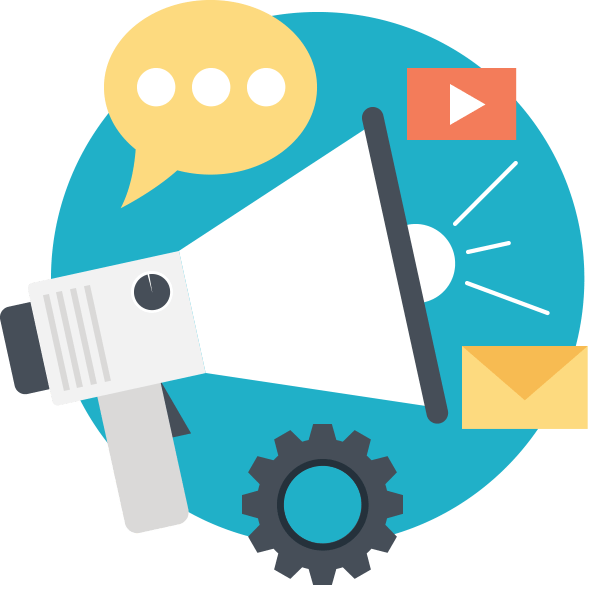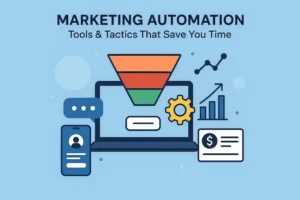Boom! You’ve built your website. Exciting times, right? But wait, before you start celebrating, have you given a thought about on-page SEO? SEO isn’t just a buzzword. It’s the lifeline of online visibility. It’s like the spices in a delicious meal; without them, you might just have a bland dish.
Table of Contents
Toggle1. Start with Quality Content.
Perhaps, this is the golden rule. Humans love value. And guess what? So does Google. Your content should be original, engaging, and informative. It’s not about stuffing keywords, but offering value that makes visitors think, “Ah, this is what I’ve been looking for!”
Let's Grow Your Business Together
2. Use Descriptive URL Structures.
www.example.com/12345? Meh.
www.example.com/best-seo-tips? Now you’re talking!
The second URL isn’t just appealing to the human eye but also gives search engines an idea of what the page is about.
3. Optimize Those Title Tags.
The title tag is like the headline of a newspaper article. It’s one of the first things search engines – and users – see. Best practices? Keep it between 50-60 characters. Include a primary keyword. And make it catchy!
4. Don’t Forget Meta Descriptions.
No, they’re not directly a ranking factor. But they’re your sales pitch on the search results page. About 150-160 characters of compelling text can make the difference between a click and a pass.
5. Header Tags are Your Friends.
H1, H2, H3… No, it’s not a confusing string of characters from a sci-fi film. They’re header tags. And they help in structuring your content, making it reader-friendly while signaling search engines about the hierarchy of your content.
6. Optimize Images for Speed and Alt Text.
A picture is worth a thousand words, they say. But an unoptimized picture on your website is a lost SEO opportunity. Compress them without losing quality. And, oh, always add descriptive alt text. Not only does it help visually impaired users, but it also gives search engines more context.
7. Internal Linking. Let’s Talk About It.
Guide your visitors. Create a web of related information within your site. This keeps users engaged, decreases bounce rates, and spreads link equity throughout your site.
8. Mobile Optimization.
In today’s fast-paced world, people want information on the go. Mobile optimization isn’t just a luxury; it’s a necessity. A mobile-friendly design ensures that users on any device have a seamless experience.
9. The Speed of the Site Matters. A Lot.
Ever clicked on a site and waited? And waited? And…left?
Speed is crucial. Not just for users but for search engines too. Use tools like Google’s PageSpeed Insights to keep a check and make necessary improvements.
10. Schema Markup: The Unsung Hero.
A bit on the techy side, but schema markup helps search engines understand your content contextually. This can lead to rich snippets in search results, which are… well, pretty cool and effective!
11. Voice Search Optimization: The Future is Speaking.
With the advent of Siri, Alexa, and Google Assistant, more and more users are using their voices to search. It’s less about rigid keyword matching and more about natural language patterns. Focus on questions and long-tail keywords that people might speak rather than type.
12. Social Signals & Sharing.
Though it’s widely debated if social signals directly impact SEO, there’s no denying the indirect benefits. Content that gets shared, liked, or tweeted can increase visibility and even bring in some quality backlinks.
13. Ensure High-Quality Outbound Links.
Linking to authoritative sources not only increases the credibility of your content but also sends trust signals to search engines. It’s like telling your audience, “See? We’ve done our research!”
14. Nail User Experience (UX).
A site that’s confusing or hard to navigate? It’s an SEO disaster waiting to happen. Improve site architecture, design, and overall user experience. Search engines notice how users interact with your site. If they’re happy, you’re likely to climb up the ranks.
15. Avoid Duplicate Content.
This one’s a no-brainer. Search engines despise duplicate content. Ensure each page on your website has unique content. Tools like Copyscape can help detect any unintentional duplications.
16. Embrace HTTPS for Security.
Google has already mentioned HTTPS as a ranking factor. A secure site not only helps in SEO but also instills trust among your visitors. No one likes those “Not Secure” warnings!
17. Regularly Update Your Content.
SEO isn’t a one-time gig. It’s an ongoing process. Updating content keeps it fresh and relevant, which search engines absolutely adore. An annual content review can do wonders.

Schedule a Consultation Now
Final Words:
Mastering on-page SEO is both an art and a science. While the technicalities are crucial, never lose sight of your users. After all, you’re not just optimizing for algorithms, but for real people with real needs and questions.
The path to SEO supremacy is long, winding, and ever-evolving. Yet, with diligence and a commitment to excellence, the journey is incredibly rewarding.
At Kiwi Web Solutions, we’re passionate about helping businesses soar online. It’s not just about rankings; it’s about creating a lasting impact. Dive deep, optimize diligently, and let every page of your website shine!




